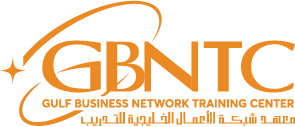Maintaining a comfortable living environment during colder months is a challenge, and a key strategy is ensuring that plumbing components are shielded from frigid conditions. This is where effective thermal wrapping comes into play, providing a significant barrier against the risk of freeze prevention. Homeowners looking for practical solutions should consider the advantages of investing in quality thermal covering. More information can be found here.
Beyond simple protection, achieving the right barrier around water conduits leads to noticeable energy savings. Unprotected systems can result in heat loss, leading to higher utility bills and increased consumption of resources. By embracing adequate coverage techniques, not only do you prolong the lifespan of your plumbing, but you also contribute to a greener, more sustainable home environment.
How Proper Insulation Reduces Energy Costs
Investing in suitable thermal protection for your plumbing system leads to significant cost savings. Proper shielding maintains consistent temperatures within pipes, reducing the need for excessive heating or cooling. This enhancement directly affects energy bills and contributes to a more sustainable environment.
Among the notable pipe insulation benefits are reduced heat loss and improved efficiency. By selecting the right material options, homeowners can enhance their systems’ performance while minimizing energy consumption. For instance, foam or fiberglass coverings provide excellent thermal resistance, ensuring less energy is wasted.
Looking for fairness? Try https://donyousemplumbing.com/ — certified games and secure payments.
In conjunction with energy savings, well-insulated pipes help with condensation control, which can prevent water damage and the growth of mold. Following maintenance tips such as regular inspections and timely replacements further supports these benefits, ensuring long-lasting protection.
Ultimately, making informed choices regarding insulation not only leads to financial advantages but contributes to the overall efficiency of heating or cooling systems within any property.
Choosing the Right Material for Pipe Insulation
Selecting suitable materials for thermal covering is crucial for ensuring energy savings and enhancing overall performance. Various options exist on the market, each providing unique advantages that cater to specific needs. For example, foam insulation offers excellent thermal resistance, while fiberglass is known for its fire-resistant properties. Understanding these material options helps in making an informed choice that aligns with project requirements.
In addition to material selection, proper installation techniques significantly impact the overall effectiveness of the thermal protection system. Ensuring a snug fit and sealing any gaps can prevent heat loss and reduce the risk of freeze damage during colder months. Regular maintenance tips, such as checking for deterioration or damage, can prolong the lifespan of the insulation and maintain its energy-efficient benefits.
When making your decision, consider factors such as climate, pipe location, and potential exposure to moisture or chemicals. This tailored approach ensures optimal freeze prevention and maximizes the advantages provided by your chosen insulation material.
Preventing Damage: The Role of Insulation in Pipe Longevity
Ensuring pipes maintain their integrity over time significantly relies on the right thermal shielding strategies. Effective covering not only protects against extreme temperatures but also plays a major role in preventing costly damages. Homeowners can explore the benefits of pipe insulation to enhance durability and longevity.
One fundamental advantage of insulating fixtures is freeze prevention during harsh winter months. Unprotected pipes can burst and lead to flooding, resulting in expensive repairs and extensive water damage to belongings and structures. Adequate thermal barriers keep the internal temperature stable, mitigating this risk effectively.
Another critical aspect is condensation control. Without sufficient thermal wrapping, moisture builds up on exterior surfaces, increasing the likelihood of corrosion. Maintaining a consistent temperature reduces the chances of water accumulation, which can lead to enhanced longevity and reliability of plumbing systems.
- Energy savings contribute to reduced utility bills.
- Implementation of correct installation techniques is essential for achieving maximum efficiency.
- Regular maintenance tips should include inspections for wear and tear on insulation.
- Choosing suitable materials can significantly impact performance and budget.
- Cost savings can be seen in the reduced frequency of repairs and replacements.
By investing in quality insulation, homeowners not only extend the lifespan of their plumbing but also enhance overall performance and efficiency. Taking these steps contributes to a more sustainable living environment while safeguarding finances in the long run.


Comments are closed